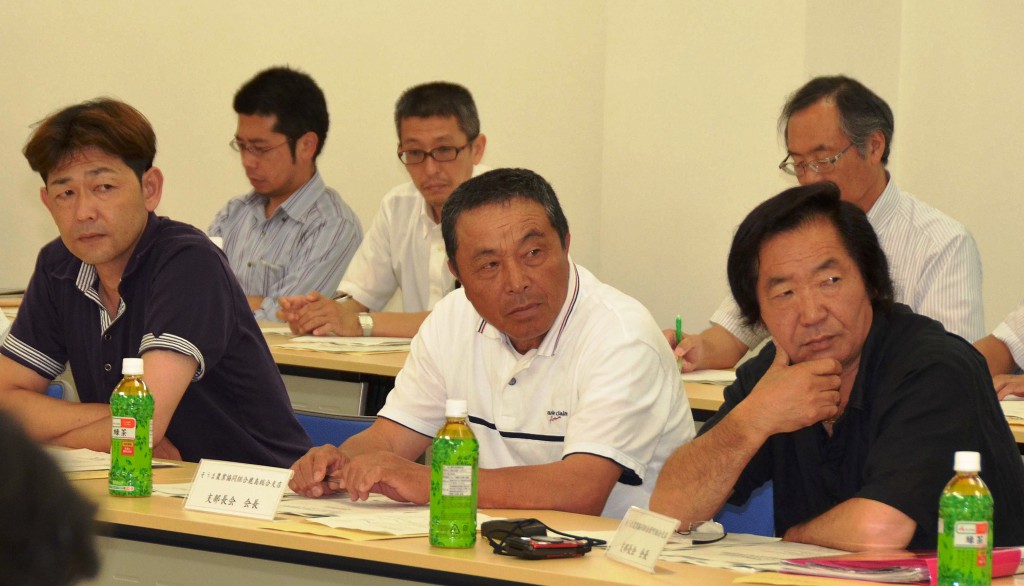Tomokatsu Sowa
Farmers of Minamisoma, Fukushima Prefecture, criticized the Tokyo Electric Power Co. and the agriculture ministry on Friday, July 18, for failing to make public for nearly a year that radioactive cesium has been dispersed during work last summer to remove debris at the Fukushima No. 1 nuclear power plant.
The fallout may have caused radioactive contamination of rice grown in Minamisoma, as cesium exceeding the government limit of 100 becquerels per kilogram was detected in rice harvested last fall in the city, including areas located more than 20 km from the crippled nuclear plant.

Local farmers attend a meeting to discuss causes of rice crop contamination, held Friday, July 18, in Minamisoma, Fukushima Prefecture.
In a meeting between farmers, local governments, TEPCO and the ministry held in Minamisoma, TEPCO officials explained that when debris was removed at the reactor 3 building last August, dirt and dust were stirred up, resulting in a dispersion of radioactive substances, as there were some places where sprinkling of dust scattering inhibitor was insufficient.
But the officials said they did not notify local residents about the dispersion, as there are no rules which oblige them to do so.
The farmers said TEPCO is only trying to back out of their responsibilities and their corporate culture of covering up information has not been improved. They protested that the incident would refuel harmful rumors over rice and other agricultural products grown in the area.
TEPCO plans to set on removing debris at the reactor 1 building in the near future. Minamisoma Mayor Katsunobu Sakurai expressed strong opposition to the plan, saying that it would further discourage farmers to produce crops.
“We want TEPCO to show us concrete measures to secure prevention of dust scattering and guarantee an environment where farmers can feel safe to cultivate,” Sakurai said.
Hajime Naito, head of an agricultural co-operative in the area, said he cannot trust TEPCO, adding that the image of Minamisoma will be hurt and rice to be harvested this year will be seriously affected.
Noriyoshi Sasaki, a 64-year-old rice farmer of Minamisoma, criticized the company for planning to conduct another debris removal work at a time when rice grain ears are emerging.
Farmers are worried not only about the effects of dust scattering on their crops but also on their health. “On the day high level of cesium was dispersed, 200 farmers were cleaning up debris at a place about 11 or 12 km away from the nuclear plant. Why didn’t TEPCO tell us immediately?” said Ryoichi Sato, 60, head of an association of certified farmers in the Odaka district of Minamisoma.
Agriculture ministry officials said there is a possibility that the cleanup work is to blame for the radioactive cesium exceeding the government limit found in rice, but added it is not clear at this point whether that was the direct cause of the contamination. They said the ministry will cooperate with research institutes to investigate the causes in detail.
TEPCO officials did not present any drastic measures to prevent dust dispersal, except for saying that the company will increase locations for setting up dust samplers to measure radiation levels of the dust in the air.
(July 19, 2014)

